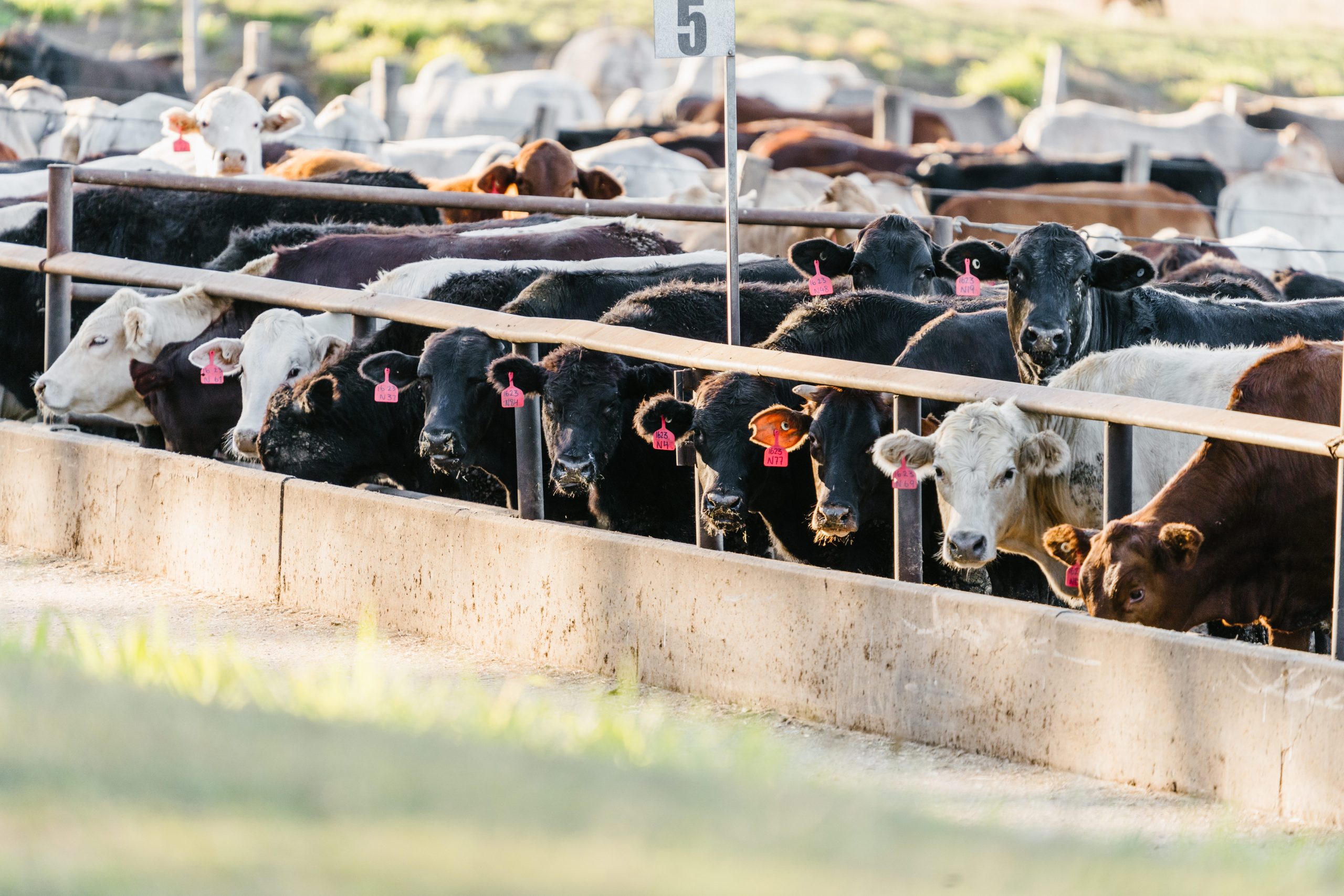
AussieFeedlots.com is an initiative of AnimalKIND. As a Queensland-based animal protection group, we have been monitoring the growth of the feedlot sector over several years and witnessed how the industry continues to expand with the support of all levels of government, despite the harmful impact it has on animals, the environment and, even, human health. With this in mind, we decided to take an in-depth look into the state’s feedlots, and to make these findings available to the public. Most people will never see a feedlot, despite being consumers of the end product.
We investigated almost a quarter of the nation’s cow and sheep feedlots and found that of the feedlots we visited:
- 42% don’t provide any shade or shelter for the animals
- 8% showed effluent spillage, including continued spills over several years at Grassdale Feedlot, Australia’s largest. Effluent is raw sewage from animals, often containing a mixture of animal waste, chemicals, antibiotics, hormones, and pathogens, which can have several detrimental effects such as pollution of waterways, eutrophication, soil contamination and habitat destruction.
- Widespread improper handling of mortalities, with many feedlots found to have uncovered carcasses. This threatens groundwater, attracts wild animals, risks spreading disease and causes odour issues.
- A feedlot in Central Queensland shows a serious biosecurity breach, with documented footage of domestic pigs eating the carcasses of dead cows. It is illegal to feed pigs meat products in all states and territories in Australia due to the potential spread of disease.
- One lamb feedlot showed particularly inhumane behaviour, with documented footage of the rough handling of lambs.
- Several feedlots containing very young calves in feedlots pens. In most states and territories in Australia, unweaned calves are not permitted in feedlots due to poor welfare outcomes.
At any time, there are around 1.2 million cows on a feedlot in Australia, and around 750,000 of those cows will be in Queensland.
Feedlots impact animal welfare and threaten the environment and human health:
Animals:
Cows and sheep endure confinement in feedlots for varying durations, where they are subjected to unnatural grain diets solely for rapid fattening. Deprived of pasture and the ability to carry out natural behaviours, they suffer from stress, boredom, and frustration. Lack of shelter exposes them to the elements, with many feedlots offering inadequate protection. Disease outbreaks are common due to close confinement, resulting in significant mortality rates, especially from Bovine Respiratory Disease, Foot Rot and Acidosis. Dead animals are disposed of in mass graves or composted, often after being ground up in cattle grinders, highlighting the stark reality of these once-living beings in the vast composting piles.


Environment:
Despite their evident risks to waterways, groundwater, and neighbouring farmers, local and state governments continue to greenlight new or expanding feedlots. Existing facilities routinely harm the environment through effluent spills, runoff, and emissions, yet face minimal repercussions from the state. Adding to the conflict, the department overseeing the industry's growth also handles animal welfare and environmental oversight, creating a significant conflict of interest in Queensland's feedlot management.
Human Health:
To combat the high disease levels in feedlots, the industry routinely uses drugs like antibiotics. Most antibiotics used in Australia are for animals (60% of antibiotic use nationally, or 182 tonnes, between 2005 and 2010 - the government has not released any more recent data). A recent study by the University of New England found that feedlot manure carries antibiotic-resistant bacteria with the potential to amplify the growing crisis in human antibiotic resistance. Antibiotic resistance is a major health issue for humanity, with potentially fatal consequences. When pathogens become resistant to antibiotics it results in infections more difficult to treat, which can lead to serious illness and even death.

